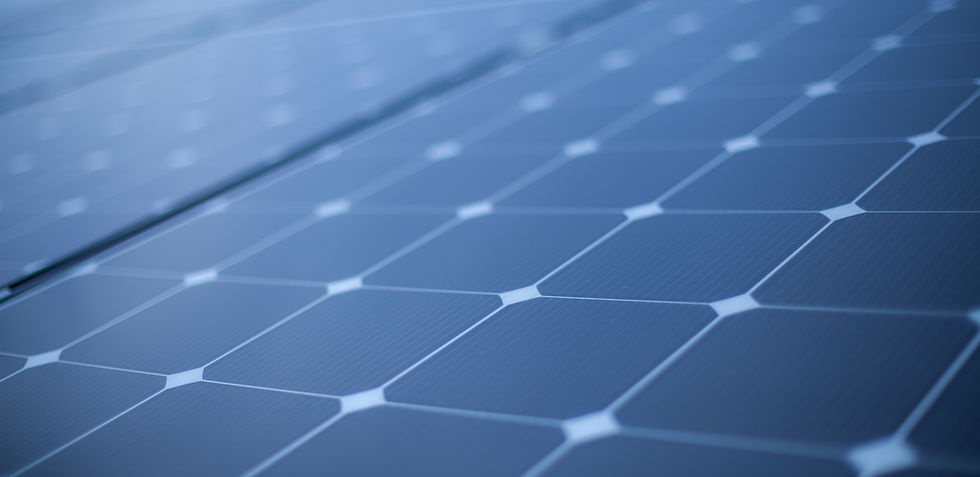Welcome to our comprehensive guide on solar energy! In this article, we'll explore the fundamentals of solar energy, focusing on the components and functions of a typical photovoltaic (PV) system, which is designed to provide electrical power to your home. By the end of this guide, you'll have a solid understanding of how solar energy is harnessed, the advantages and disadvantages of using solar power, and why it's becoming an increasingly popular choice for clean, renewable energy.

The Components of a PV System
A standard PV system consists of several key components, each playing a crucial role in converting sunlight into usable electrical energy:
1. Solar Panels
Function: Solar panels are the heart of any PV system. They capture sunlight and convert it into electrical energy through the photovoltaic effect. The panels generate direct current (DC) electricity, which is the first step in powering your home.
2. Solar Charge Controller
Function: The solar charge controller regulates the voltage and current coming from the solar panels to the batteries, ensuring that the batteries are charged safely and efficiently without being overcharged.
3. Batteries
Function: Batteries store the electrical energy generated by the solar panels, providing power during nighttime or cloudy conditions when sunlight is not available. They are a critical component for maintaining a consistent power supply, especially in off-grid systems.
4. Inverter
Function: The inverter converts the DC electricity produced by the solar panels and stored in the batteries into alternating current (AC), which is the standard form of electricity used in homes.
These components work together to create a functional and efficient solar energy system. In an off-grid setup, the combination of solar panels, charge controllers, batteries, and inverters ensures a continuous and reliable energy supply.
Advantages of Solar Energy
Solar energy offers numerous benefits that make it an attractive option for homeowners:
Green Energy: Solar power is a clean, renewable energy source that doesn't produce harmful carbon dioxide (CO2) emissions.
Cost-Effective: Once installed, solar panels provide free energy from the sun, reducing your electricity bills.
Energy Independence: Solar systems can be installed locally, reducing transmission losses and allowing homeowners to generate their own power.
Low Maintenance: PV systems require minimal maintenance—typically just cleaning the panels occasionally to ensure optimal performance.
Silent Operation: Solar panels operate silently, unlike other renewable energy sources like wind turbines, which have moving parts that can generate noise.
Solar energy is also widely available across different regions, making it a versatile and accessible energy source for many.
Disadvantages of Solar Energy
While solar energy has many advantages, it's important to be aware of its limitations:
No Power at Night: Solar panels only generate electricity during the day, requiring batteries for nighttime power storage, which can be expensive.
Lower Efficiency: Solar panels typically have an efficiency rate of 15-18%, meaning they only convert a portion of the sunlight they receive into electricity.
Space Requirements: High-power PV systems require a large area for installation, which can be challenging in densely populated urban areas.
Initial Costs: The upfront cost of installing a solar system, including batteries and inverters, can be high, although prices are gradually decreasing.
The Photovoltaic Effect and How Solar Panels Work
Solar panels rely on the photovoltaic effect to generate electricity. This process involves several steps:
Absorption of Light: Solar cells within the panels absorb photons (light particles) from sunlight.
Generation of Electric Current: The energy from the photons frees electrons within the solar cells, creating an electric current.
DC to AC Conversion: The generated DC electricity is converted to AC by the inverter, making it usable for household appliances.
Solar cells are typically made from silicon, a semiconductor material that is treated with phosphorus and boron to create an electric field. This field is essential for driving the flow of electrons, which generates the electricity needed to power your home.
Solar energy is a powerful and sustainable energy source that offers numerous benefits for homeowners looking to reduce their carbon footprint and achieve energy independence. By understanding the key components of a PV system and the principles behind solar power generation, you can make informed decisions about incorporating solar energy into your home. Despite some challenges, the long-term benefits of solar energy—such as low operating costs and environmental sustainability—make it a compelling choice for the future.
In our next lesson, we’ll dive deeper into the specifics of solar panels, exploring different types, efficiencies, and how they can be best utilized in various settings. Stay tuned!
Welcome to take part in out SOAFAIR events. Find out more!
コメント